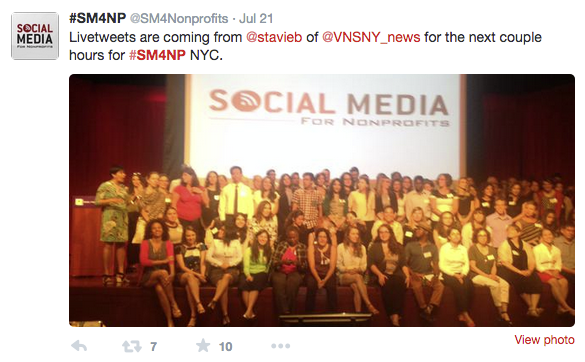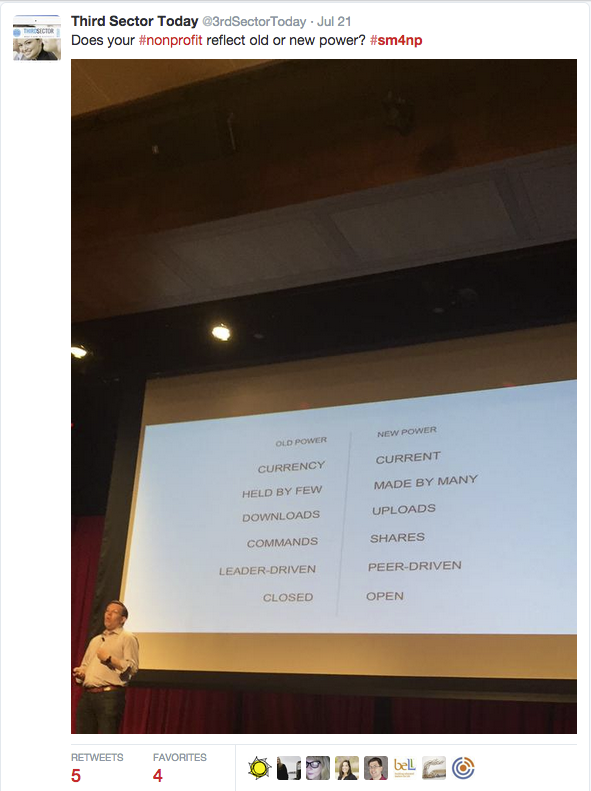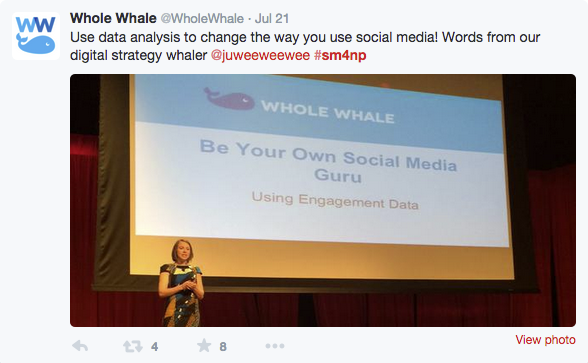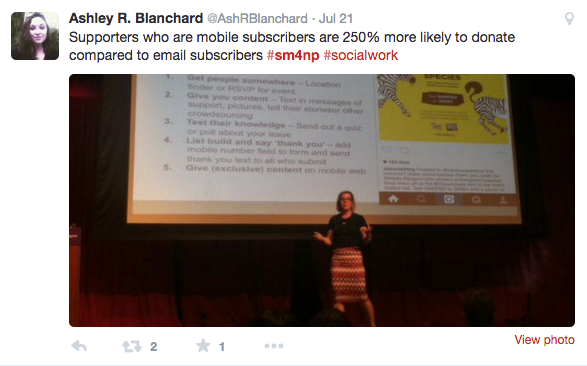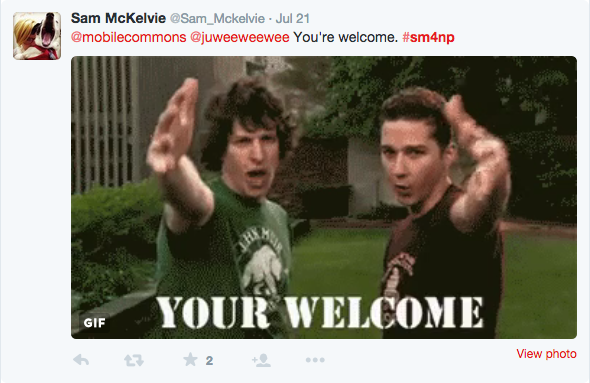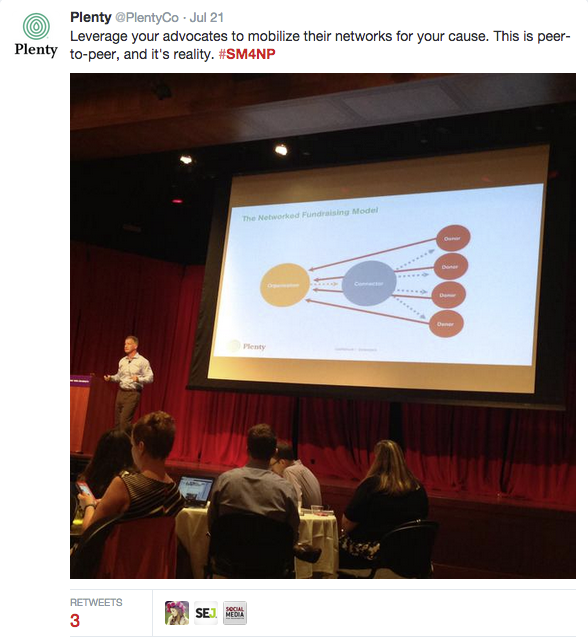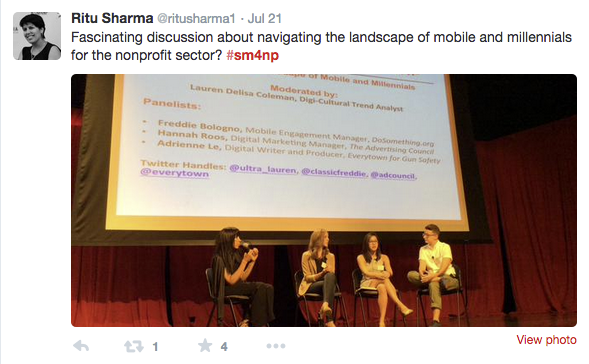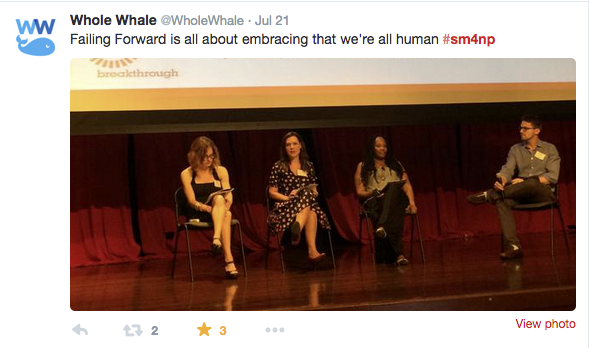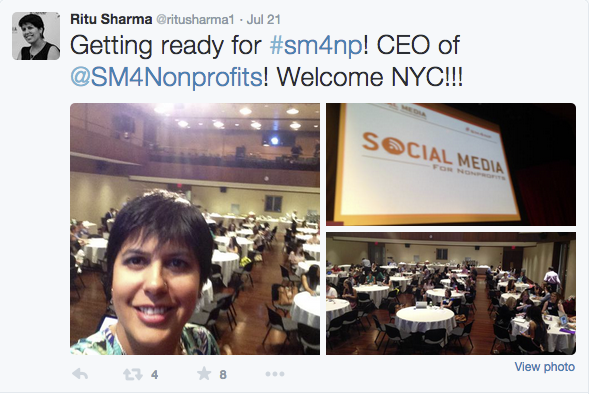
On Tuesday, July 21st, The Social Media for Nonprofits Conference kicked off in New York City, organized by Co-Founder and Executive Director of the organization, Ritu Sharma. The day was packed full of intriguing and informative sessions about how to leverage your social media outlets to market your organization’s mission.
The speakers included Henry Timms, the Founder of #GivingTuesday, Julie Leary a Digital Strategy Analyst at Whole Whale, Sam McKelvie the Director or Customer Success at Mobile Commons, Caroline Avakian, Founder of SourseRise, Jeff Shuck, the CEO of Plenty, A Panel of Millennials discussing SMS messaging, Jay Geneske the Director of Digital at The Rockefeller Foundation, and a panel discussion featuring representatives from nonprofits on the topic of Failing Forward.
I’d love to share all that I learned at the conference to give you the inside scoop on all the topics they covered, but it would fill a book. Instead, I’d like to bring you there in another sense: through social media itself.
So I present to you 41 Social Media For Nonprofits Tweets You Can’t-Miss:
From the talk, “New Power: Disruption and Democratizing Philanthropy Through #GivingTuesday”
Henry Timms, Executive Director, 92Y and Founder #GivingTuesday Twitter handle: @htimms
1) The Concept of New and Old Power in The Nonprofit World
Hint: You want to be in the new power column! What changes could you make to be more focused on putting power in the hands of your community?
2. This Awesome Statistic About Mobile Giving
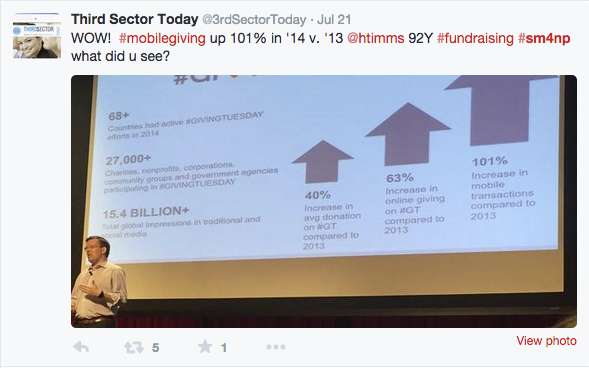
Tip: Make sure your site is ready to take mobile donations this upcoming #GivingTuesday!
3) This Amazing Reference to Sherlock Holmes And Dr. Watson
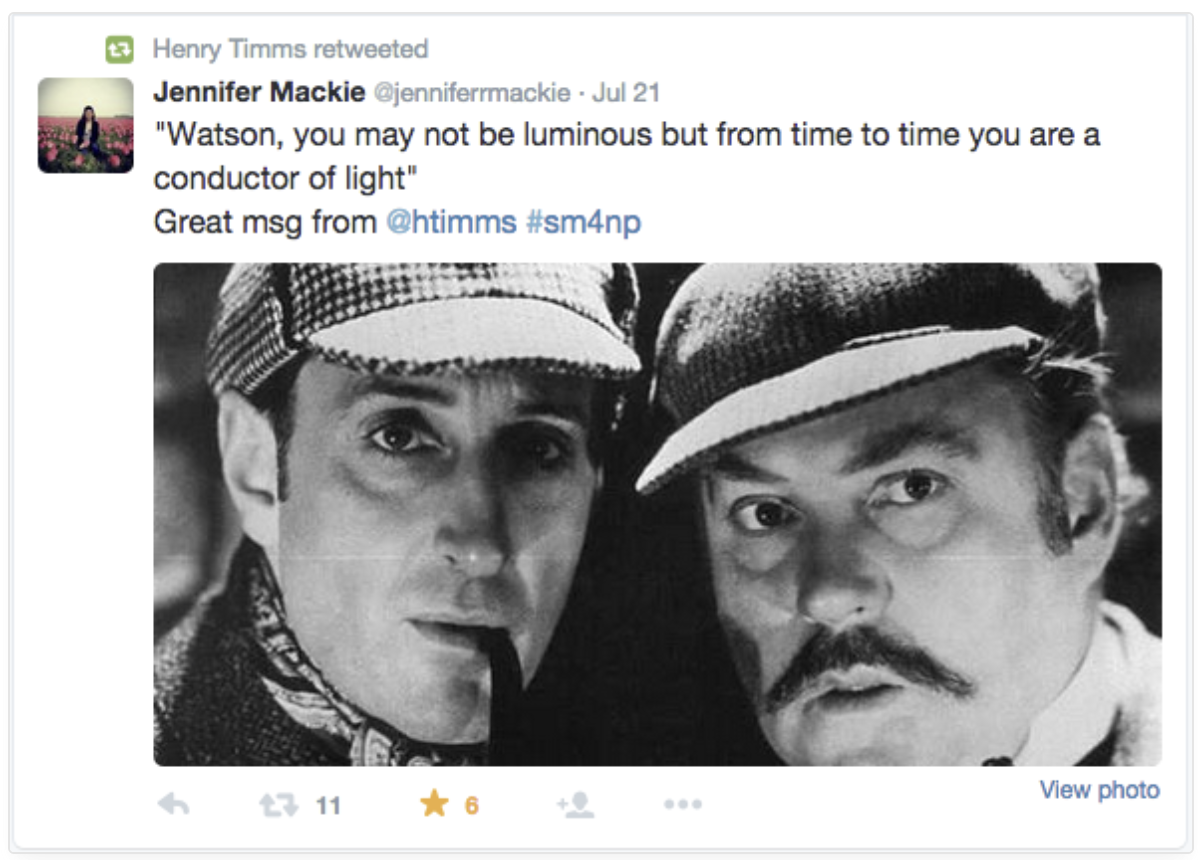
It’s great to hear from Henry Timms that we don’t all have to be Henry Timms, we can step forward and use movements and tools already available to us to make a great change.
4) This Small Shift In Thinking That Results In Great Impact
If your donors own your cause, they also become the promoters of the cause! Give them tools to equip them to make a difference, not rules to limit their potential to get involved.
5) This Fascinating Tidbit About Millennials

If technology is that important to the millennial generation, adapting your nonprofit to include advances in technology, like mobile optimization and having a social media presence should be near the top of your to do list.
6) And This Quote That Reminds Us Movements Are Bigger Than Us

From the talk, “How To Be Your Own Social Media Guru”
Julie Leary, Digital Strategy, Whole Whale @juweeweewee
7) The Idea That Analyzing Your Data Can Make You Your Own Social Media Guru.
By listening to what your users are saying within the overall response to your posts, you can figure out what you’re doing wrong and what you’re doing right, and then use that information to make more effective posts!
8) This List Of Things To Measure When Analyzing Social Media Data
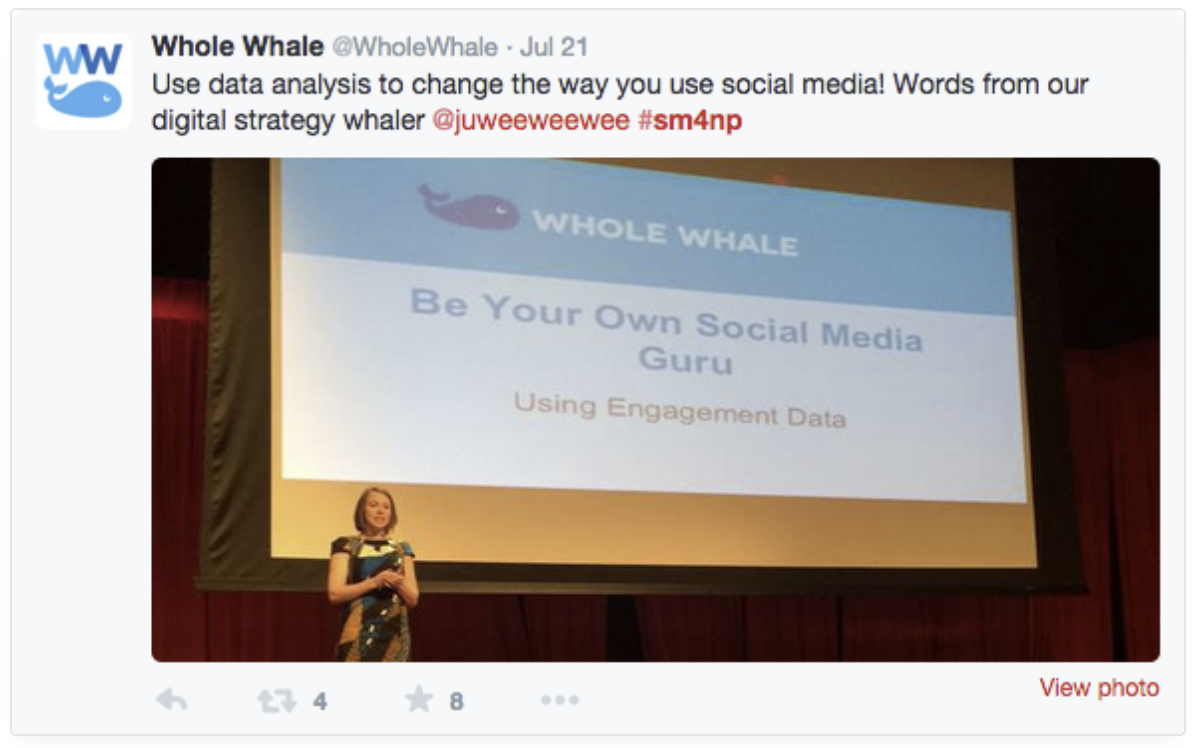
9) This List of Advanced Platforms That Measure This Data For You
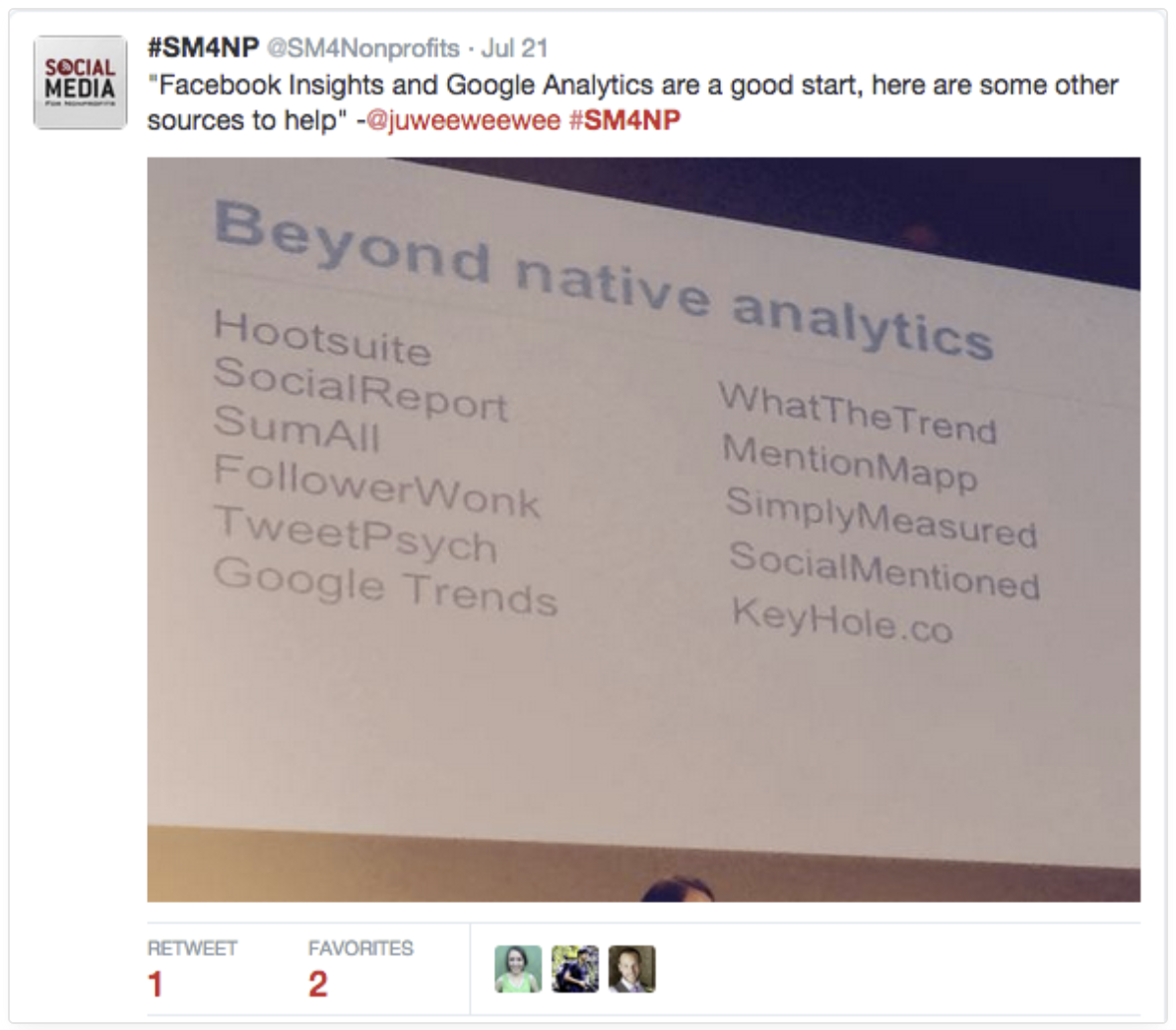
10) The Concept Of Assisted Conversions

Look who followed you on social media before they became a donor, but was initially referred to your site another way. This can help you see how your social media is helping move people up the engagement ladder!
11) This Helpful Tip Reminding Nonprofits What Posts Work On Social Platforms.
Everyone remembers the Ice Bucket Challenge, because it challenged people who take the challenge to tag 3 friends. If they had asked people to ‘share this post,’ it wouldn’t have spread so well- that’s vague. Make sure your asks are clear and easy.
From the talk, “OMG SMS FTW! Building Bugger, Better Text Message Campaigns”
Sam McKelvie, Director of Customer Success, Mobile Commons @Sam_Mckelvie
12) The Big Question
Well, there you have it.
13) The First Step To Set Up SMS
Since you can’t just add anyone who’s number you have to your SMS list, in your next email include an option to receive text messages from you!
14) This Equation

When you use SMS combined with email, social media platforms, and other forms of media strategies, you’ll find that when you plan things to work alongside one another, you’ll have a much bigger following for your next campaign.
15) The Idea That Not All Communication Via SMS Should Be The Same

Your posts shouldn’t exclusively be about asking for donations or informing people about your cause. You should be in touch relatively regularly with your supporters, around 3 weeks or less in between text messages. Also, mix it up with content!
16) And Here’s How You Can Mix It Up:
17) And This Crazy Statistic About SMS:
18) And Sam’s Response To Thankfulness For Her Talk…
From the talk, “Periscope for Nonprofits- Live Streaming for Social Good”
Caroline Avakian, Founder, SourceRise @CarolineAvakian
19) Exploring Periscope with Caroline Avakian
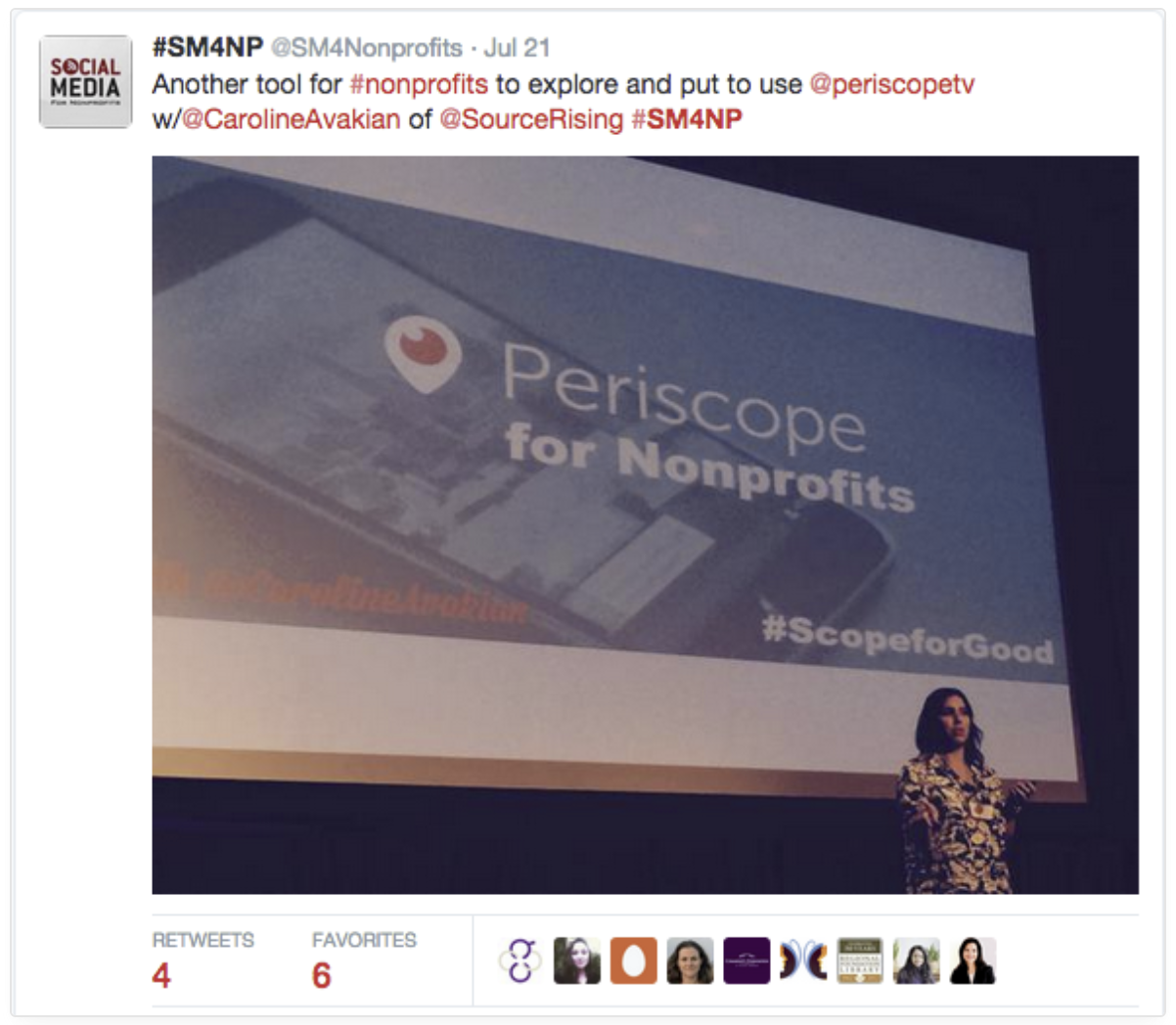
20) These Practical Applications of Periscope:

21) The Best Practices Of Using Periscope:
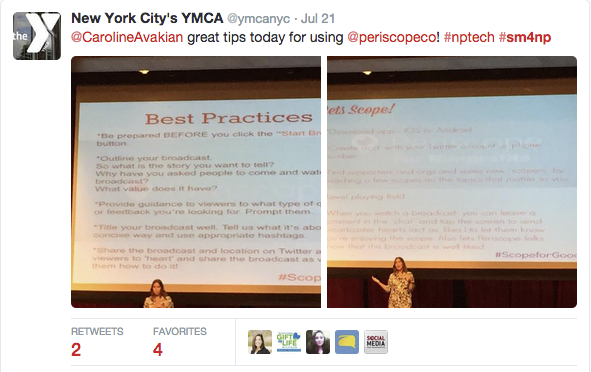
In case you can’t read it, here’s the slide:
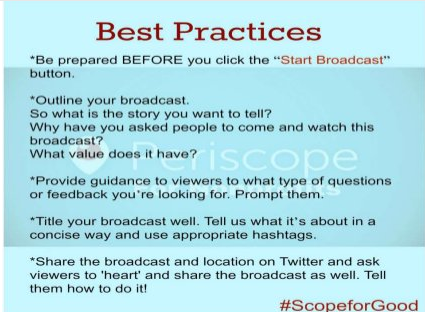
22) This Encouragement To Engage Viewers:
23) And These Tips On Dealing With Problems With Periscope:
From The Talk, “The Next Step in Leveraging Peer-to-Peer Dynamics: Design for People”
Jeff Shuck, CEO, Plenty @JeffShuck
24) The Idea That Fundraising Isn’t Complete Without Engaging Your Peers To Fundraise
25) These 4 Trends In Culture That Explain A Shift In Giving Practices

We encounter the world alongside our friends, why should donating be any different? When you have a community supporting you, you can do so much more good than if you were on your own. There’s been a shift in attention from the idea that a nonprofit that someone supports bestows the organization’s identity onto them to the concept that an individual leaves a mark of their identity on the nonprofit. This means that nonprofits should prepare themselves to encourage personalized campaigns. Lastly, businesses have found they can convince they are good not just because they support something good, but what they do is inherently good. Nonprofits now must get creative in raising funds and put their own brand out there to convince potential donors they are worthy of donations.
26) This Question That Makes All The Difference When Marketing For Your Nonprofit
There’s a shift in donations from general cancer organizations to specific cancer nonprofits-this means that donating is becoming increasingly personal. People donate to things they themselves have a story about.
27) And This Encouragement Toward Nonprofit Collaboration
From The Talk, “Navigating the Landscape of Mobile and Millennials”
Lauren Delisa Coleman, Digi-Cultural Trend Analyst @ultra_lauren
Freddie Bologno, Mobile Engagement Manager, DoSomething.org @classicfreddie
Hannah Roos, Digital Marketing Manager, The Advertising Council @adcouncil
Adrienne Le, Digital Writer and Producer, Everytown for Gun Safety @everytown
28) This Amazing Panel Of Millennials Explaining How Nonprofits Can Interact With Them
29) Freddie From DoSomething’s Approach To SMS That We Can All Learn From:
30) These Words That Ring A Little Too True
It hurts because it’s accurate. Nonprofits can keep up with the times by posting culturally relevant material.
31) And Here’s How To Determine What’s Relevant:
32) And This Encouragement To Be Real.

From the talk, “Storytelling for Impact”
Jay Geneske, Director of Digital, The Rockefeller Foundation @JGeneske
33) Jay Geneske’s Distinction Between Nonprofit Storytelling And A Mission Statement:
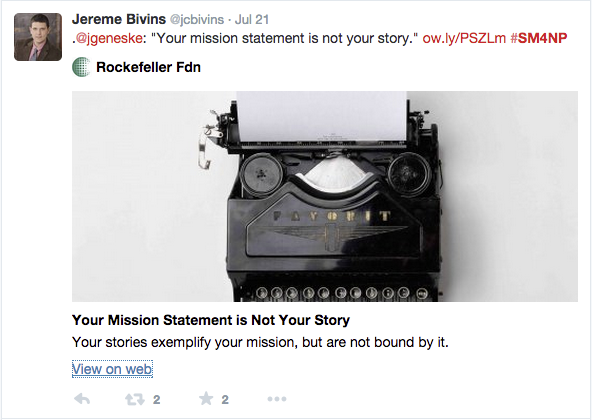
34) This Encouragement For Nonprofits To Give Donors The Opportunity To Share:
35) This Interesting Concept About Content Creation And Distribution:

Why does great content matter if no one ever sees it? Don’t be afraid to repost tweets and cycle old and new content onto your social media platforms.
36) This Awesome Tip To Take The Load Off Of Content Creation:
Failing Forward: Adventures in Social Media
George Weiner, Founder and Chief Whaler, Whole Whale @georgecaweiner
Lynn Harris, VP of Communications, Breakthrough @harrislynn
Nonso Christian Ugbode, Director of Digital Initiatives, National Black Programming Consortium @BLKpublicmedia
Emily Moyer, Senior Vice President, Marketing and Digital Strategies, The Michael J. Fox Foundation @michaeljfoxorg
37) This Inspiring Take On Learning From Our Failures:
38) The Idea That Failure Means You’re Trying To Do Something New:
39) This Helpful Tip About Accepting Defeat And Moving Forward:

40) And The Idea That The Stories You Tell Are Ultimately Your Key To Connect With Your Audience:

The stories your nonprofit can tell are powerful and can connect to people on a deeper level. Use that fact to your advantage by asking donors to take a specific action.
41) And This, Because You Might As Well Have Been There Now That You Know All The Best Information From The Social Media For Nonprofits Conference!
